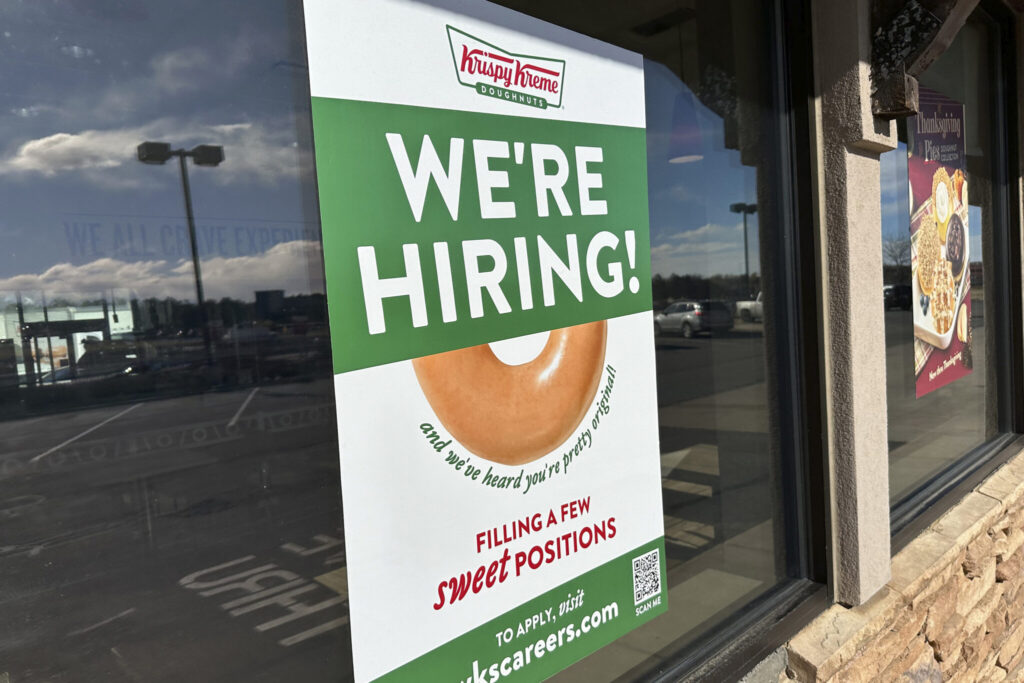US jobless claims/ unemployment filings November 2024/ labor market trends/ Federal Reserve rate cuts/ continuing claims/ US GDP growth/ WASHINGTON/ Newslooks/ J. Mansour/ Morning Edition/ Jobless claims in the U.S. dropped by 2,000 last week to 213,000, approaching seven-month lows. While new claims remain historically low, continuing claims rose to 1.91 million, the highest since November 2021. These figures reflect a robust labor market but hint at challenges in reemployment as hiring demand slows.

US Jobless Claims: Quick Looks
- Jobless Claims: Initial claims fell to 213,000, near the lowest levels in seven months.
- Continuing Claims: Increased by 9,000 to 1.91 million, the highest since late 2021.
- Labor Market Insight: New claims suggest strong employment, but ongoing claims highlight reemployment difficulties.
- Economic Context: The U.S. economy grew at a 2.8% annualized rate in Q3, supported by consumer spending.
- Federal Reserve Action: Amid slowing employment data, the Fed cut interest rates twice recently to address inflation.
Jobless Claims Decline, Hinting at Steady US Economy
Deep Look
The number of Americans filing for unemployment benefits dropped again last week, signaling continued resilience in the U.S. labor market. According to the Labor Department, initial jobless claims for the week ending November 23 decreased by 2,000 to 213,000, maintaining levels near a seven-month low. While these numbers reflect historically healthy employment conditions, other data indicates potential cooling in the job market.
Continuing claims, which track the total number of Americans receiving unemployment benefits, rose by 9,000 to 1.91 million for the week ending November 16. This marks the highest level of ongoing claims since November 2021. The increase in continuing claims suggests that while layoffs remain low, finding new jobs may be growing more difficult as hiring slows.
The four-week moving average for continuing claims, which smooths weekly fluctuations, climbed by 13,500 to 1.9 million, further emphasizing emerging challenges in the labor market.
Economic Context
Despite signs of softening demand for workers, the broader U.S. economy remains strong. On Wednesday, the Commerce Department reaffirmed its estimate that gross domestic product (GDP) grew at a robust 2.8% annualized rate in the third quarter. This growth was fueled by strong consumer spending and a surge in exports.
The Federal Reserve has also taken steps to address economic conditions. In response to slowing employment momentum and easing inflation, the Fed cut its benchmark interest rate twice in recent months: a half-point reduction in September and another quarter-point cut earlier in November.
Outlook on Inflation and Interest Rates
Although inflation has receded from its peak, it remains above the Federal Reserve’s target of 2%. During its last meeting, Fed officials voiced caution about further rate reductions, signaling uncertainty about their next moves. While most economists expect another quarter-point cut in December, the Fed may pause rate adjustments in subsequent meetings to assess economic conditions.
Investor sentiment reflects similar uncertainty. According to the CME FedWatch tool, Wall Street sees nearly equal odds for another interest rate cut next month.







